Filigree | A Lost Mystical Folk-Rock Gem Reawakened
Filigree is a hidden treasure for lovers of Femvox Folk-Rock, with their 1973 IBC acetate offering a compelling mix of gothic traditional folk, electric folk classics, haunting originals, and ethereal vocals—particularly the entrancing performances from the two female voices, which steal the show.
Formed in 1971 from the union of two Hertfordshire-based folk duos—Contrast (Chris and Roger Jeffery), who embraced a more contemporary sound, and Grendell’s Ring (Pat Turner and Pete Cunningham), whose roots were deeply steeped in tradition—Filigree quickly became known for their delicate vocal harmonies and expansive, experimental approach to folk music. The band recorded live for the BBC and produced their acetate LP in 1973, capturing a moment in time when folk music felt like an open portal to something mystical. Though their years of activity were brief, the release of Bright Carving has given their music a long-overdue rebirth, drawing attention to the band’s unique fusion of folk and rock. Though Filigree disbanded in 1977, their legacy lives on, still captivating those who seek the more haunting, mysterious corners of folk music.
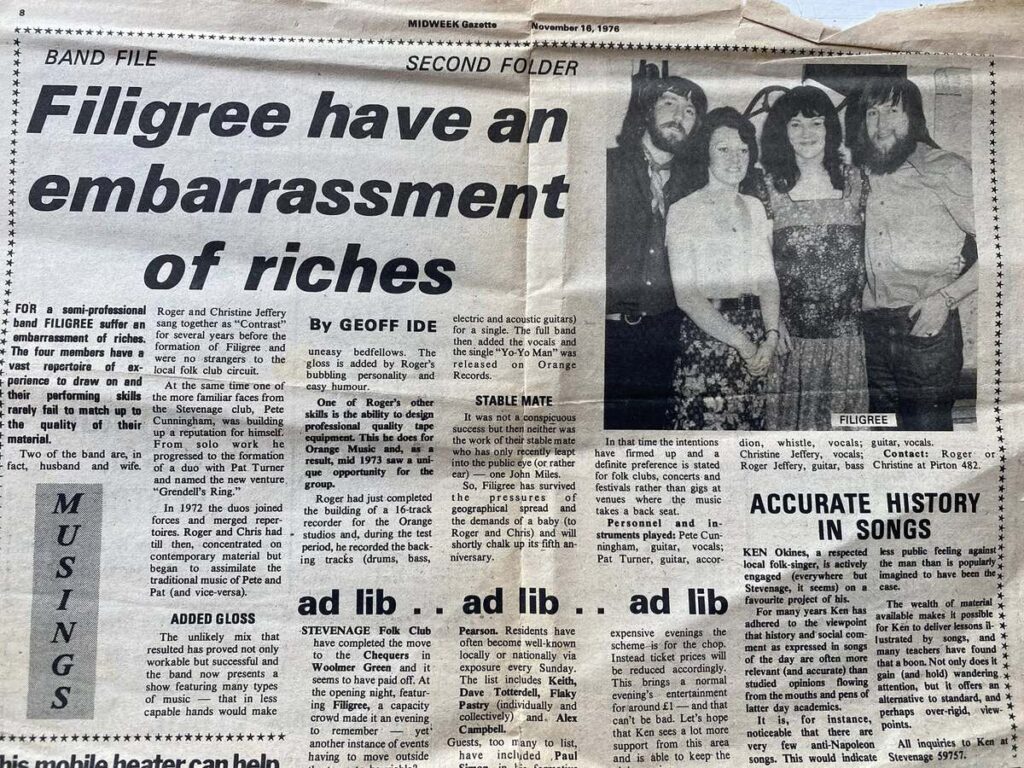
“We did what we did for the love of the music and our communal friendship.”
Pat, can you take us back to when you were growing up in Hertfordshire? What kind of music was playing around your house, and what early records made an impact on you? Were you into folk music straight away, or did it come later?
Pat Turner: I was singing as far back as I can remember. I was into folk music early on. Early mainstream influences were Peter, Paul and Mary, Joan Baez, Bob Dylan, and The Seekers, but I soon moved to traditional revivalists like Ewan MacColl, Peggy Seeger, Young Tradition, Tony Rose, and many others.
Roger Jeffery: Chris and I moved to Herts around 1970. We had been playing together as a duo for around three years and had eclectic tastes in music. We married in 1969.
Before Filigree, did you have any other bands or projects? What were you playing at that time, and how did those experiences shape your role in Filigree?
Roger: Chris had sung at school, and I had played extensively in pop and rock bands. I got the taste for folk clubs after visiting the Downe (Kent) club around 1968.
Pete Cunningham: In the late 1960s and early 1970s, I was singing solo, covering James Taylor and Joni Mitchell as well as traditional songs. I was a resident MC at many folk clubs around Hertfordshire, Cambridgeshire, Essex, and North London. I met Pat at The Dimsdale Arms Folk Club in Hertford, and we started singing together. We both liked Roger and Chris, who were singing as a duo named Contrast.
Pat: In my teens, I taught myself to play guitar and started going to folk clubs, and that’s where we all met. I had no plans to sing in a folk-rock band. Did that term even exist then??
Filigree’s origins seem to come from two different folk duos—Contrast and Grendel’s Ring. How did you all get together? Was there a specific moment when you realized this would be the band you wanted to be in?
Pete: Roger approached me, suggesting they would like to add another guitar and voice to their act. I suggested adding Pat would be even better. So Filigree was born.
Pat: A fortuitous day, I think, when the four of us got together. And lucky that we blended socially and vocally. The fact that we came from different musical backgrounds just gave us more scope. And we drew no boundaries. One of us would introduce a song—if the others liked it, we’d start work on it.
Roger: We got together as I was looking for a bigger sound than two voices and one guitar. We clicked from the start.
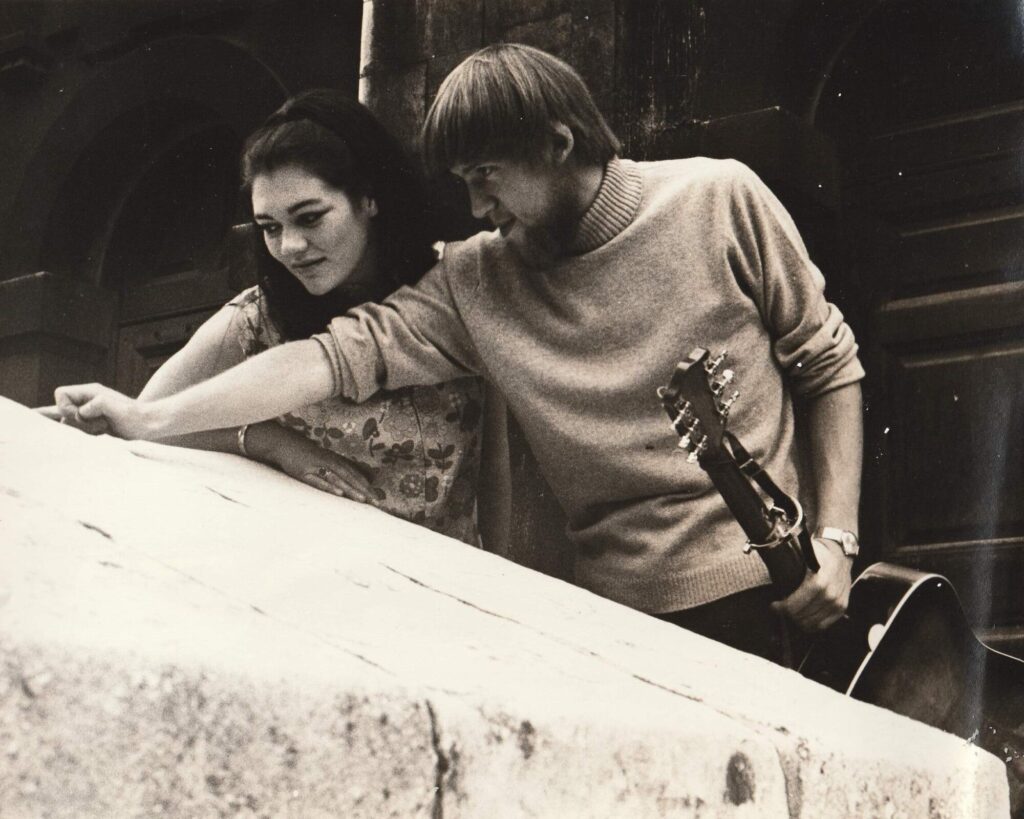
When you first started playing with Filigree, what was your initial sound? Did you have any idea of what you wanted to create, or did it develop over time as you all played together?
Roger: It matured over its five-year run.
Pete: Any member would bring a suggestion for a possible song, and we would all sit and work out how to approach the performance—whether a cappella, guitar-based, or vocal arrangements. Our publicity line was “From Palestrina to The Beatles and Everything in Between.” Banter between Roger and me often ended up in side-splitting laughter from ourselves and the audience. We had a great time.
You recorded some tracks with the BBC, which must have been pretty exciting at the time. How did that come about? Was it a nerve-wracking experience, or did you feel at home in front of the mic?
Roger: The BBC tracks were recorded at Sidmouth Folk Festival in two sessions in 1974. They were with a live audience.
You also recorded an acetate in 1973 at Orange Studios. What was the recording process like for that? Was it all live, or did you do a lot of takes and overdubs? Did you get the sound you wanted right away, or did it take a while to get things to click?
Pete: As Roger worked for Orange Music and had access to a superb recording studio, he suggested we might like to record an album. As he was an experienced recording engineer, we jumped at the chance.
Roger: I was working at Orange Studios at the time, so I had a good knowledge of the recording process and was able to tell the engineer what we needed. The resulting acetates were all that was produced, but I still have the 1/4″ stereo master tapes, from which the Bright Carvings pressings were largely made.
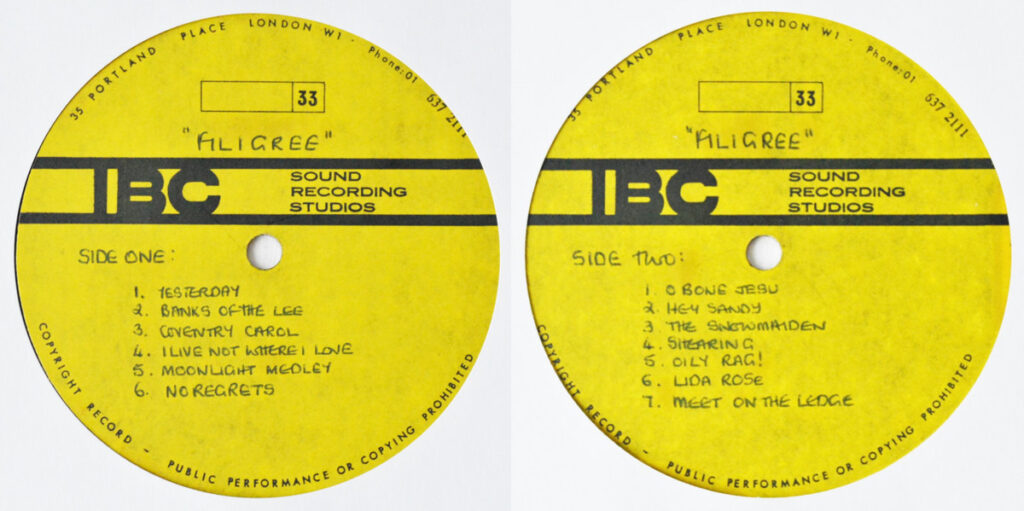
The reissue of Bright Carvings has brought some of those recordings back to life. What do you think of how they sound now, especially after all this time? Were there any tracks that you were particularly excited to see included, or maybe some that you’d forgotten about?
Roger: Thrilled with this final product, and very grateful to Bright Carvings for all their work. Jon made the final choices on music and artwork and did a great job.
Speaking of that reissue, how much of a role did you play in choosing what went on there? Was there any unreleased stuff that didn’t make the cut? Any behind-the-scenes stories about putting that together?
Pete: One track seems to have escaped onto a 45rpm disc and got to No. 174 on the hit chart (‘Yo, Yo, Man’ on Orange Music).
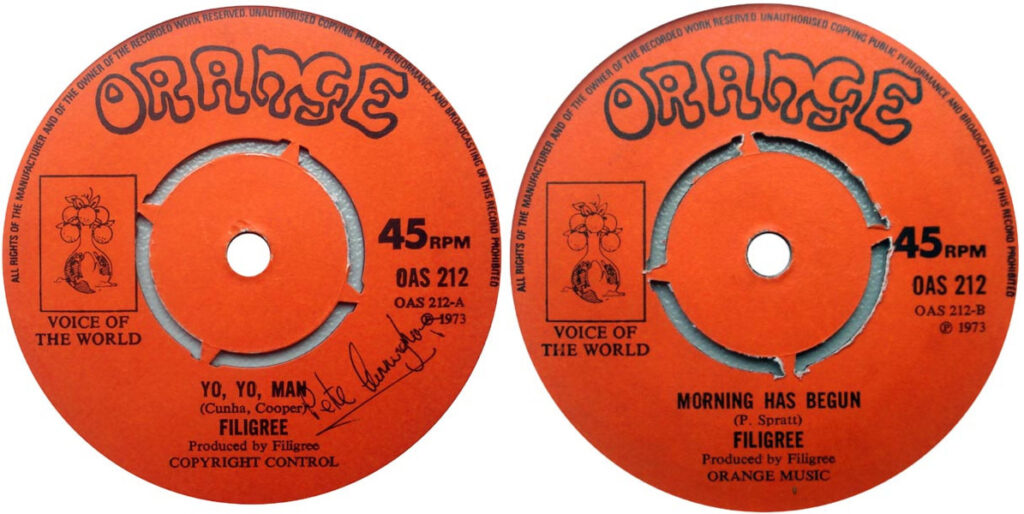
You played with a lot of bands back then. Who were some of the most interesting bands you shared a stage with? Was there anyone in particular that you felt a real connection with, or someone you learned something from?
Roger: Yes, we shared stages with some great performers, but we were rarely influenced by them.
Can you think of any gigs that stand out as the wildest or most memorable? Was there a moment where everything just clicked and the audience really got into what you were doing?
Roger: One of my standouts was the Sidmouth session, which did not go to air, but I still have a copy tape of it.
Filigree’s music has this haunting, mystical vibe—especially on tracks like ‘The Snow Maiden’ and ‘Meet On the Ledge.’ Was that something you were deliberately aiming for, or did it happen organically as you experimented with different sounds?
Roger: The arrangements were always the result of a musical democracy in action. We respected each other’s input.
You recorded some covers, like ‘Meet On the Ledge’ and ‘Coventry Carol.’ How did you choose those songs? Were there any others you thought about covering at the time but didn’t?
Roger: Again, we would all have some input.
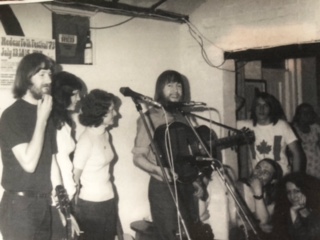
You were active in the folk scene, especially in festivals like Sidmouth. Was it competitive at all, or did everyone feel like part of a close-knit community? How did the folk scene influence Filigree’s approach to their music?
Roger: Not competitive at all. We did what we did for the love of the music and our communal friendship.
After Filigree disbanded in ’77, how did that affect the band members? Was it an easy decision to call it quits, or did you all have a sense that the band still had more to give?
Roger: For Chris and I, we were new parents, and so going out at night and returning late was no longer an option. But it was great while it lasted! We got little airplay, but didn’t resent it.
Pat: Not long after we made the recordings, Chris became ill. We didn’t know it then, but she had cancer, so work stopped and never re-started. That’s why there’s a dedication to her on the album. She had a wonderful voice and deserves recognition.
Pete: We were absolutely devastated when Chris got cancer and left us far too soon. Of course, everything was shelved.
It’s been decades since Filigree was around, but now with the Bright Carving reissue, there’s this renewed interest in the band. How does it feel to have your music reintroduced to a new generation of listeners? Do you think this reissue is a fitting way for Filigree’s legacy to live on?
Roger: It’s probably not a reissue, as it was never released prior! I am thrilled that it is out there, that a copy will go into the National Archives, and that it still sounds as good as when it was recorded fifty years ago. I am now retired; I live on a small island off the coast of New Zealand, and I play music with my partner of twenty years. We have our own all-analogue home recording studio, which we share with other local musicians on the island.
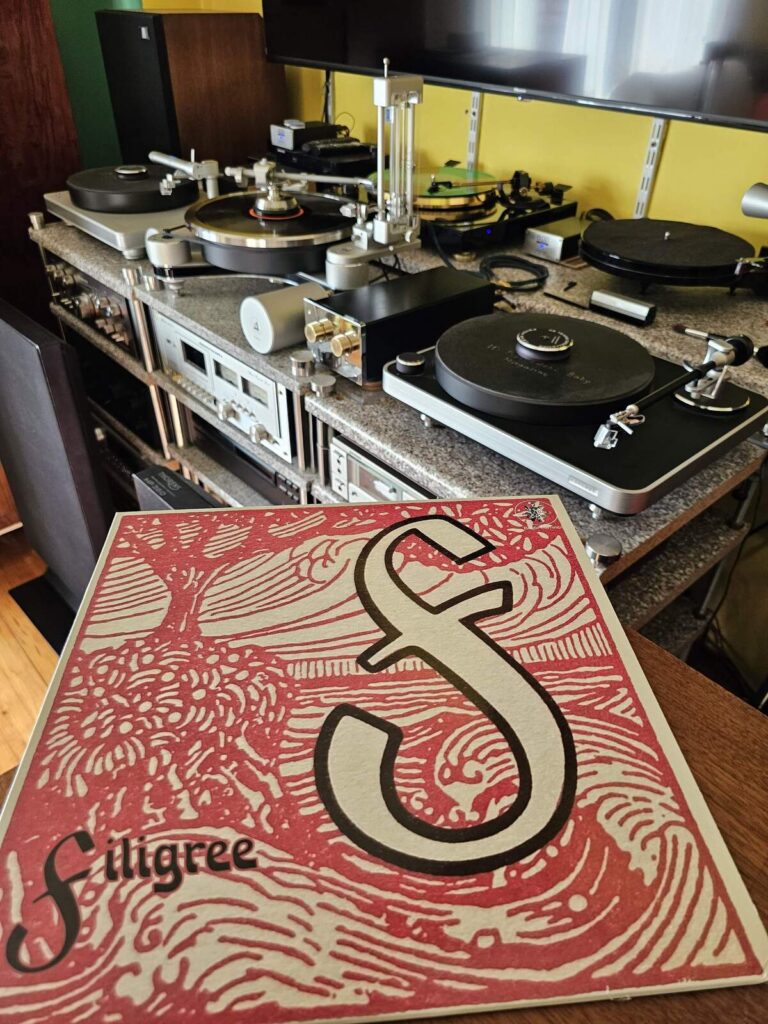
In your personal life, has music stayed a central part of what you do, or have other interests taken over since those early days with Filigree?
Pete: I went on to join another purely a cappella singing quartet, Heritage, appearing at major festivals, radio, and television, and recording an LP with Plant Life Records, ‘Living By The Air.’ Pat went on to join another singing friend of ours and now sings as a duo. I have gone on to play and sing solo and with various ceilidh bands and sessions. I also run a very successful music retail business, P J Music, and take my shop to many festivals.
Pat: We’re all still singing and performing. You’ve heard Roger’s side. I sing in a duo, and we’ve made six albums (CDs today!). Not folk-rock, but it shows how committed we all are to our music. We’ve all loved seeing the Filigree album come to fruition, and we’re so grateful to Jon at Bright Carvings for recognizing its potential.
Klemen Breznikar
Bright Carvings Official Website / Facebook / Instagram / YouTube
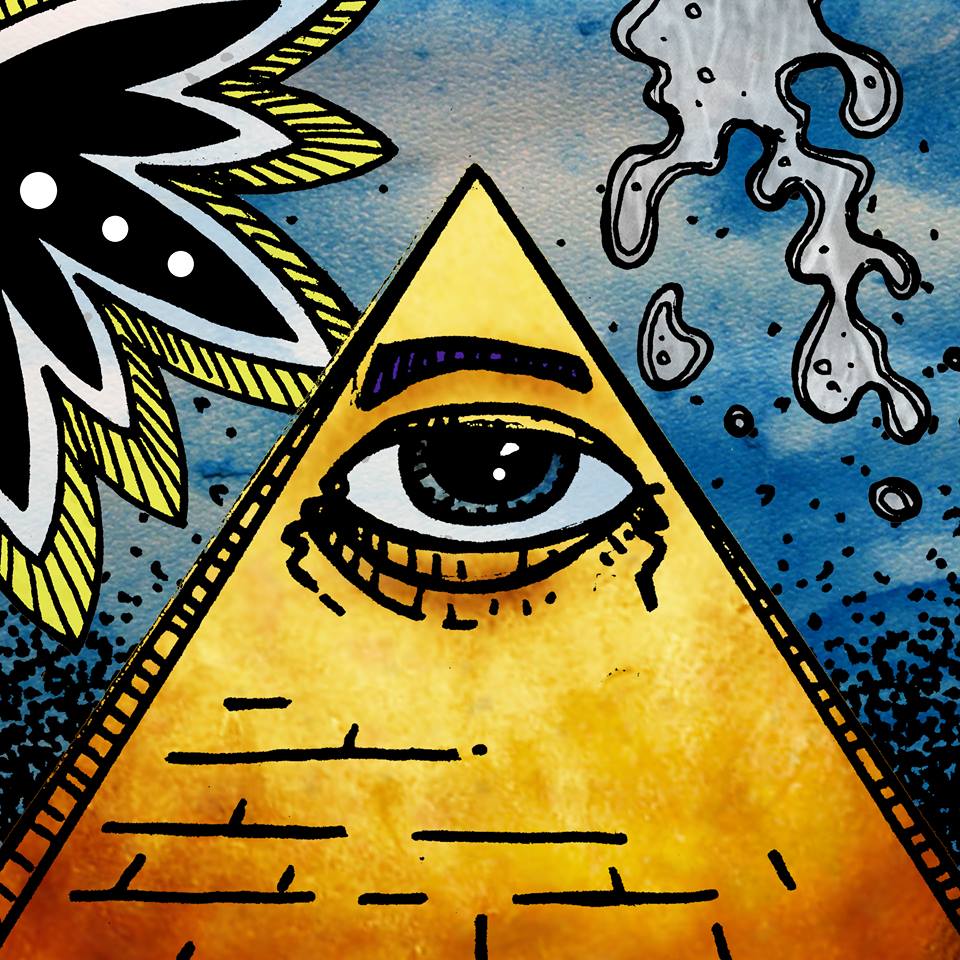

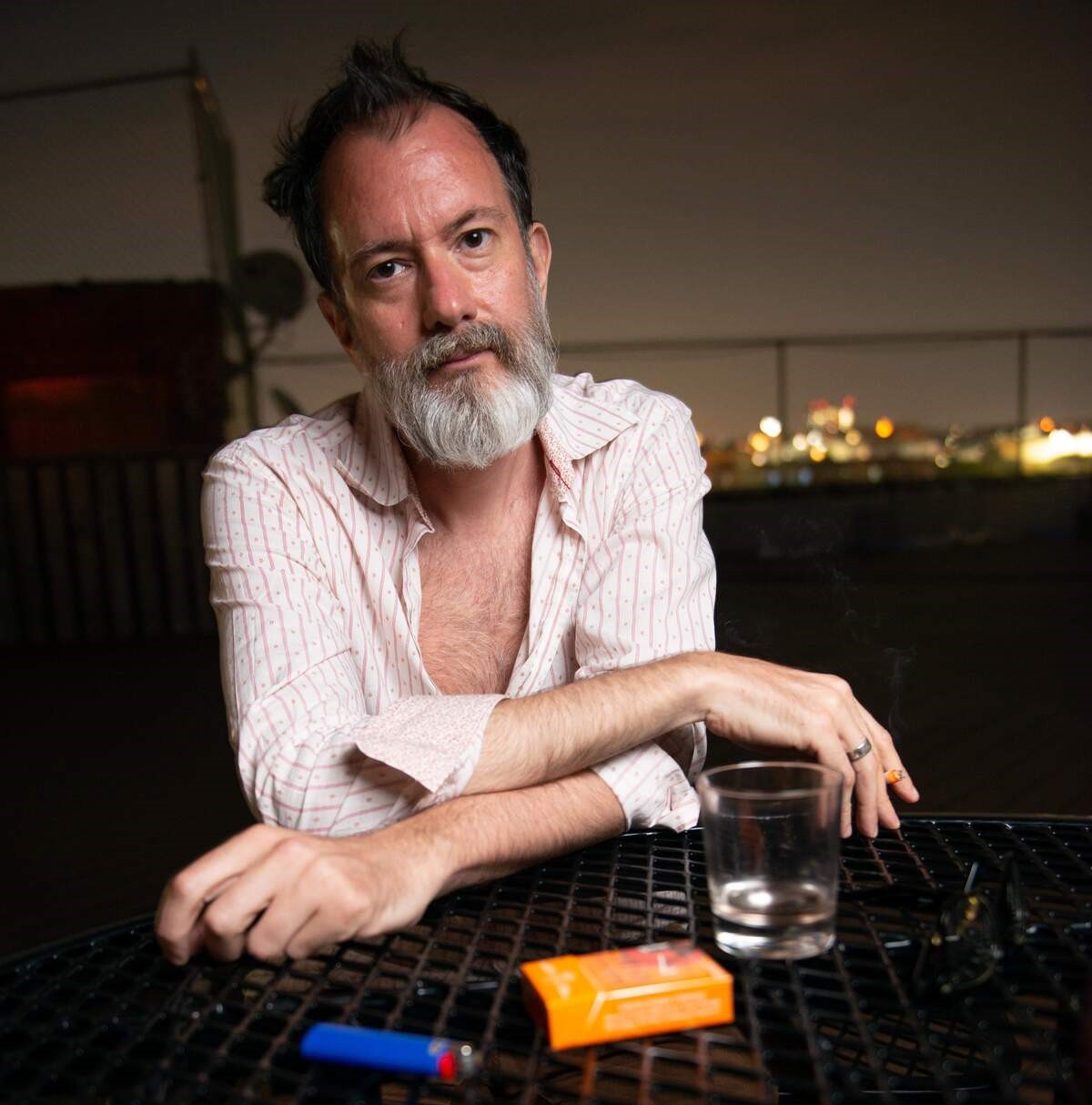
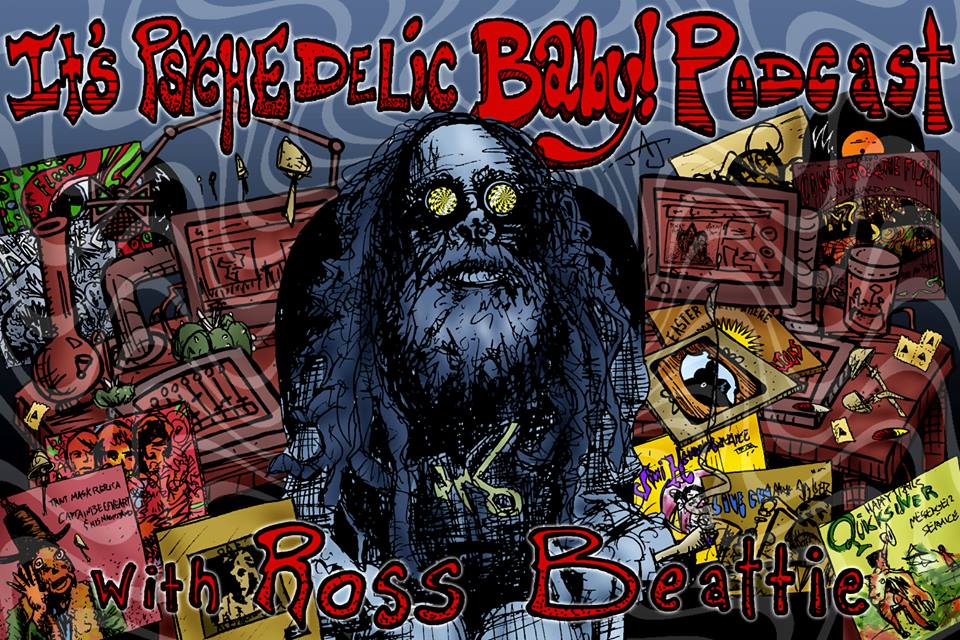
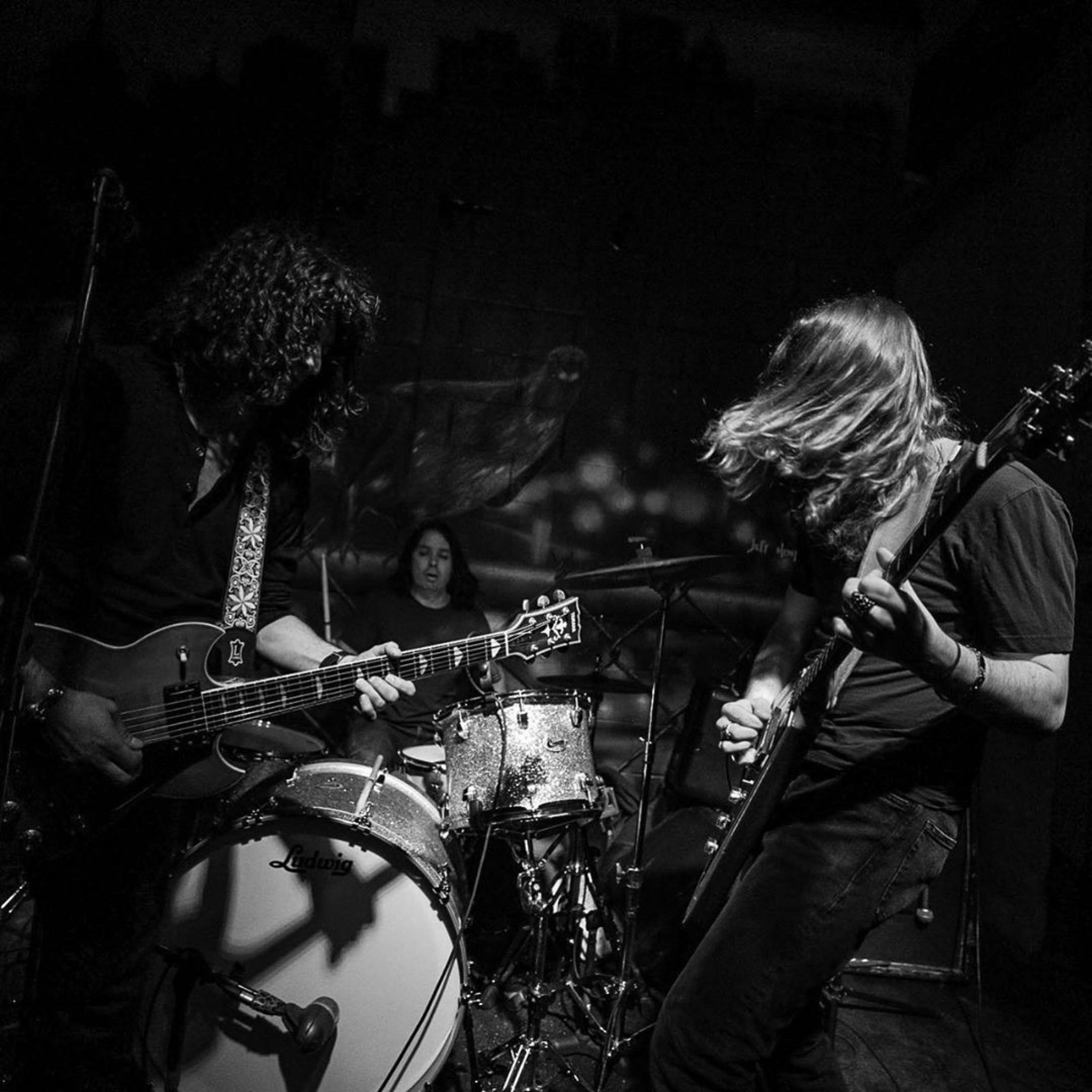
THANK YOU